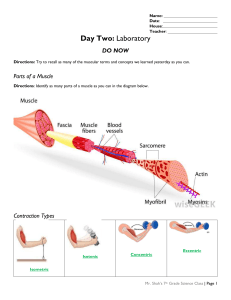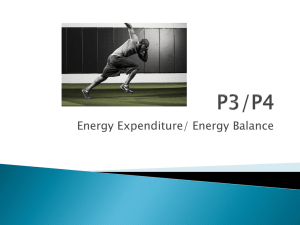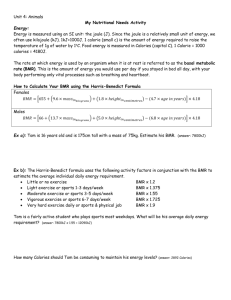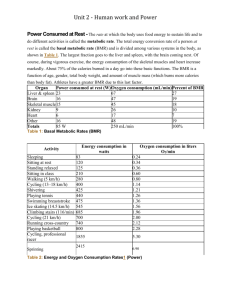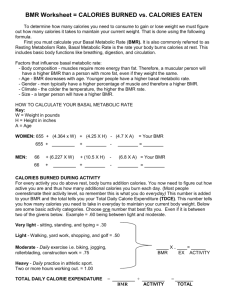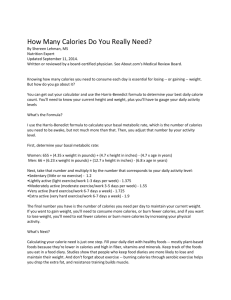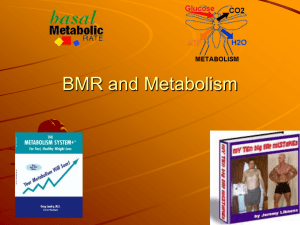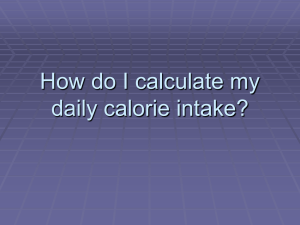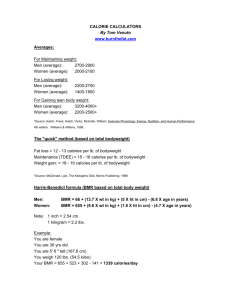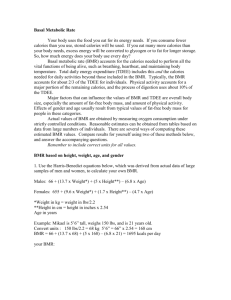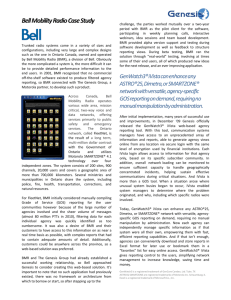Muscular - Laboratory
advertisement
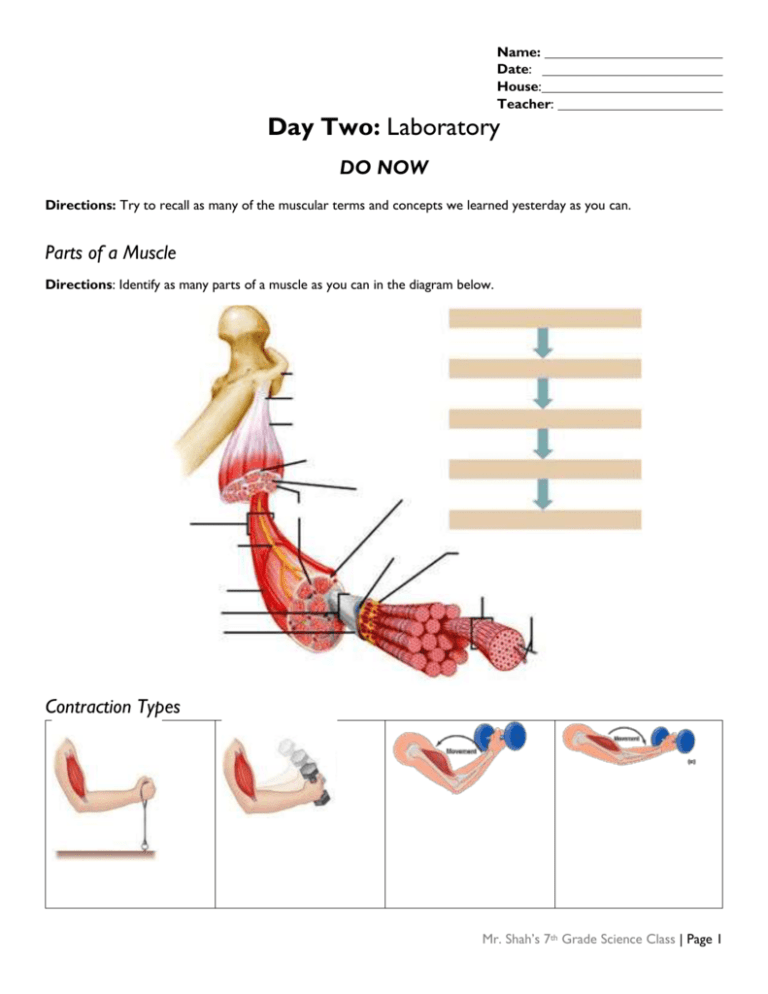
Name: Date: House: Teacher: Day Two: Laboratory DO NOW Directions: Try to recall as many of the muscular terms and concepts we learned yesterday as you can. Parts of a Muscle Directions: Identify as many parts of a muscle as you can in the diagram below. Contraction Types Mr. Shah’s 7th Grade Science Class | Page 1 I DO: Muscular Disorders Directions: Organize notes about the most common disorders and diseases of the muscular system. Muscular Dystrophy Classification Signs and Symptoms Diagnosis Treatment Preventable? Curable? Manageable? Myasthenia Gravis Classification Signs and Symptoms Diagnosis Treatment Preventable? Curable? Manageable? Myotonia Congenita Classification Signs and Symptoms Diagnosis Treatment Preventable? Curable? Manageable? Tendonitis Classification Signs and Symptoms Diagnosis Treatment Preventable? Curable? Manageable? Mr. Shah’s 7th Grade Science Class | Page 2 WE DO: Basal Metabolic Rate Basal Metabolic Rate (BMR) is used to measure how much energy your body needs and uses to carry out its basic functions at rest. From pumping blood, to breathing, to sending signals in the nervous system, to fighting diseases, to muscle movement, mitochondria are working hard to provide the energy needed to keep you alive and operational. This energy is measured in terms of calories, and when used, can be restored by eating food. Once BMR is calculated, we may still need additional calories based on our daily needs. Many factors can influence BMR: Genetics Gender Age Muscle mass Body temperature Exercise Directions: Follow the steps below to calculate your own BMR. 1. Define the following variables according to your own measurements: a = weight in pounds b = height in inches c = age 2. Plug these variables into the Harris Benedict Equation and solve to calculate your BMR. BMR = 66 + (6.23 x a) + (12.7 x b) – (6.8 x c) My BMR = Mr. Shah’s 7th Grade Science Class | Page 3 YOU DO: Calorie Counting Activity Level In the space below, calculate your daily calories Daily Calories Needed needed based on your activity level and BMR. Sedentary BMR x 1.2 Light Exercise (1-3 days/week) BMR x 1.375 Moderate Exercise (3-5 days/week) BMR x 1.55 Intense Exercise (6-7 days/week) BMR x 1.725 Very Intense Exercise (2/day) BMR x 1.9 Daily Calories Needed: _____________ 1. Assume you eat three meals a day, plus a few snacks in between. How many calories would you budget for each of these meals? Remember, these must add up to your Daily Calories Needed. Calories for Breakfast Calories for Lunch Calories for Dinner Calories for Snacks The table to the left shows the number of calories in many common fast food items. Which of these food items would fit into your caloric budget? Mr. Shah’s 7th Grade Science Class | Page 4 Name: Date: House: Teacher: EXIT TICKET Directions: Jill Rothman, a 26-year-old gymnastics instructor, presents with complaints of muscle weakness in her face that comes and goes, but has been getting worse over the past two months. Most notably, she complains that her "jaw gets tired" as she chews and that swallowing has become difficult. She also notes diplopia ("double vision") which seems to come on late in the evening, particularly after reading for a few minutes. At work, it has become increasingly difficult to "spot" her gymnasts during acrobatic moves because of upper arm weakness. On physical examination, she has notable ptosis ("drooping") of both eyelids after repeated blinking exercises. When smiling, she appears to be snarling. Diagnose the patient with one of the muscle disorders below. Muscular Dystrophy Myasthenia Gravis Myotonia Congenita Tendonitis Then, explain your answer using the R.A.G.E. method. Your evidence should relate to bone and body mass. Mr. Shah’s 7th Grade Science Class | Page 5
